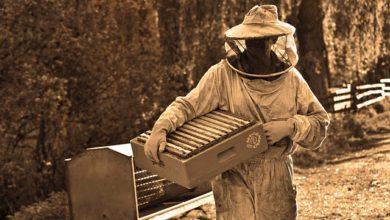Why Are Bee Suits White?
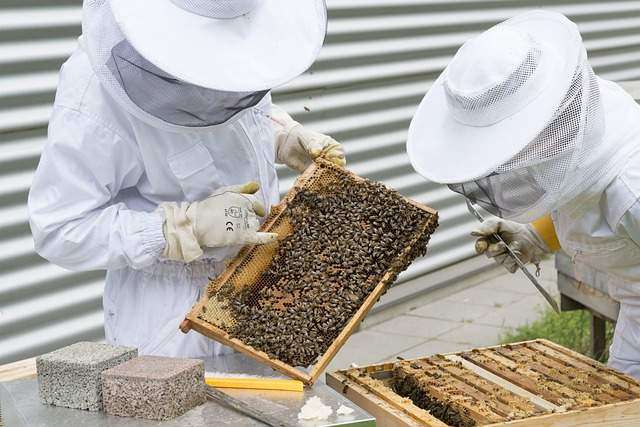
Introduction
Wearing protective clothes is optional for many beekeepers, as evidenced by the many YouTube videos on the subject. White is nearly invariably the color of a beekeeper’s bee suit or jacket. Honey bees are said to avoid dark-colored predators like bears, raccoons, and skunks by wearing white bee jackets. White absorbs less heat from the summer sun than dark hues, making white outfits more pleasant for the beekeeper than a darker suit.
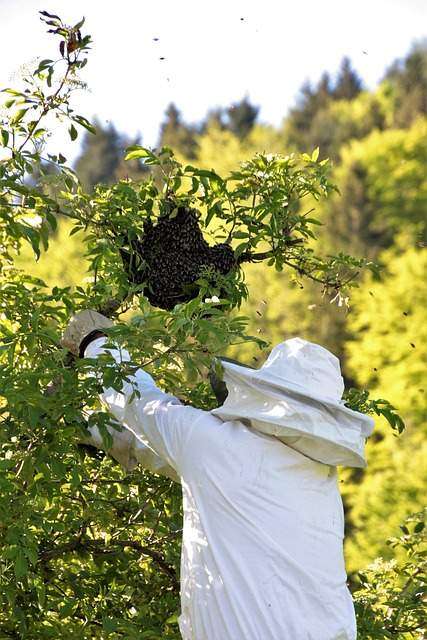
Evolution
The explanation is straightforward and a result of natural selection. Protecting themselves from predators has been a necessity for bees as they’ve evolved. Animals attacking a beehive because they want to eat the sweet honey are the most common culprits. Most of these predators/animals are dark in hue by coincidence.
Bees are supposed to have developed a disdain towards dark-colored animals over time as a result. Beekeepers can approach and open their hives without fear of attack and aggression from their colonies by wearing white, thereby making it less likely that bees will sting or attack them.
For beekeepers who want to stand out, change things up, or just look their best, there are several providers who sell suits in colors other than white. An in-depth look at the meaning of beekeeping suits and why beekeepers choose to wear white is provided in this article.
Dark hues are a prominent source of attack stimulation for honey bees, according to Dylan Voeller and James Nieh of the University of California, San Diego. Since animals are often hairy and black in color and exhale CO2, it seems logical that this is the case for bees. “
Beekeepers (including myself) wear black mesh hoods and veils to prevent sunlight reflection, despite the fact that dark colors have been shown to elicit aggressive behavior in honey bees. Why do I have black on my head if it makes bees attack? Why else would my lungs exhale CO2? Veils with light-colored exteriors and black interiors were examined by scientists at Brazil’s State University of Sao Paolo (USP). Using a lighter veil, honey bees were shown to be less hostile.
White Absorbs Less Heat, thus Beekeepers Wear White.
In addition to bears, there is another reason why beekeeping outfits are white. Summer is the busiest time of year for most beekeepers. Light colors (like white) absorb less heat from the sun, which helps keep things cooler in the summer. Work through some hives in the middle of August while wearing a bee jacket. As a result, you’ll be covered in perspiration by the end of it. To make matters worse, you should avoid wearing a dark hue.
There is nothing worse than having to wear a full-body suit in the sweltering heat. As a result, the color white is a wise choice. It will help keep the light and heat off of you. When it comes to sweating, there is no such thing as a white t-shirt. Depending on the climate where you live, you may still find yourself sweating profusely even when wearing a beekeeper suit.
Why Lighter Colors Absorb Less Heat from Light
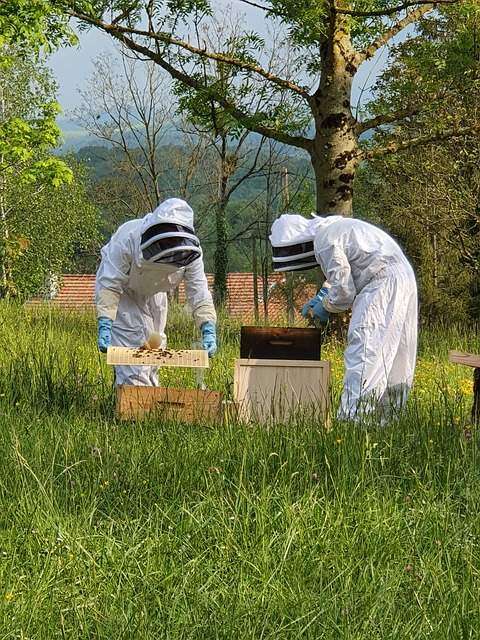
Radiant energy can be found in the form of sunlight. An object that is exposed to sunlight will reflect some of the light back to the source, while absorbing the remainder, which will result in heat being generated. The way an object reflects light affects the colors we see. Because white reflects nearly all of the light it encounters, relatively little of it is absorbed and converted to heat. All (or almost all) light is absorbed by the black color. This results in a significant increase in heat production. You may argue that black isn’t really a color because it doesn’t reflect light. It’s a world devoid of any hue.
The more light a color reflects and the less heat it absorbs, the closer it gets to white. There is nothing cooler than a pale yellow beekeeping costume. However, it would still be less pleasant on a hot summer day because it would absorb more heat than white.
However, it doesn’t matter if you’re wearing dark colors or not because white and bright colors are far more pleasant in the heat. Ventilated bee suits can help you stay cool in the heat, in addition to wearing light colors.
Color Perception and Vision in Bees
To have a clearer picture of how bees see and perceive color, we first need to assess our own visual abilities. Color is perceived via a spectrum. Think of the “basic colors” of red, yellow, and blue when you’re looking for a color palette. Colors begin to appear as the primary hues mingle (think green, orange, and purple).
The way in which an object reflects light is what gives it its color. Only light with a wavelength between 390 and 750 nanometers can be detected by human eyes, and it is at these wavelengths that the colors we are all familiar with and like (or dislike) may be found. It’s also worth noting that bees are only capable of seeing wavelengths between 300 and 650 nanometers. To put it another way, while we can see some colors, bees are able to see other hues that we cannot.
What Colors do Bees See?
There are no problems for bees in the visible blue and green regions of the light spectrum, including all the varied hues of these colors. They are also capable of seeing wavelengths in the ultraviolet zone (wavelengths ranging from 390 nanometers and below), allowing them to perceive hues we can only dream.
Bees’ Preferred Color is Bee-purple.
Yellow and ultraviolet make bee-purple a color that’s undetectable to the human eye. Bees find it to be the most enticing color, and it may even be their all-time favorite. In the bees’ preferences list, bee-purple is closely followed by violet and blue, as these colors draw more bees than any other color. Bees are drawn to nectar because of the color, not because of the color itself. UV patterns as beacons in their attempt to collect pollen (beecons if you will). In order to locate and gather nectar, bees follow these beacons, which are typically painted a bee-purple color.
What Colors do Bees Not See?
The color red and beyond are addressed by the wavelength range above 650 to 800 nanometers (infrared). As a result, bees are unable to perceive red, but they can see lighter colors of orange and yellow, such as the combination of orange and yellow. Bees see white as an uninteresting hue that doesn’t require any negative attention from them. When it comes to honey-stealing predators, there aren’t a lot of them in white.
It’s important to remember, though, that a bee will sting you regardless of what clothing you’re wearing. In the end, white beekeeping garments aren’t much of a shield from the wrath of aggressive bees. Bees, on the other hand, aren’t completely trusting of you just because you’re dressed in white.
Bees aren’t compelled to attack white objects, but that’s all there is to the matter. You should exercise caution whenever you are working with a beehive, especially if your bees are agitated and provoked, regardless of what color you choose.
Bees and Bright Colors
Bees are naturally drawn to brightly colored flowers, therefore it makes sense that they are drawn to brightly colored blossoms. The majority of bee species like yellow, blue, and purple-hued flowers like zinnias, asters, and daisies. As a result, bees’ interest in these blossoms extends to the colors they display as well. As a result, and despite their overwhelming preference for flowers with vividly colored petals, bees do not reject or avoid blooms with darker hues, as one might expect (more on that below).
Are Bees Calmer Around White Beekeeping Suits?
Explore bee forums on the internet. Many anecdotes support both sides of this debate, in my opinion. Dark colors don’t seem to matter to many beekeepers, which leads me to believe that something else is at play. Despite the fact that bees may target darker colors when they are defensive, it seems to me that the color is simply the target and not the source of the problem. Other factors contribute to bees becoming protective. We once had a colony that was quite defensive. As soon as I popped the lid open, they started hammering on my hood… The white (well, dirty white) suit does not detract from the overall effect.
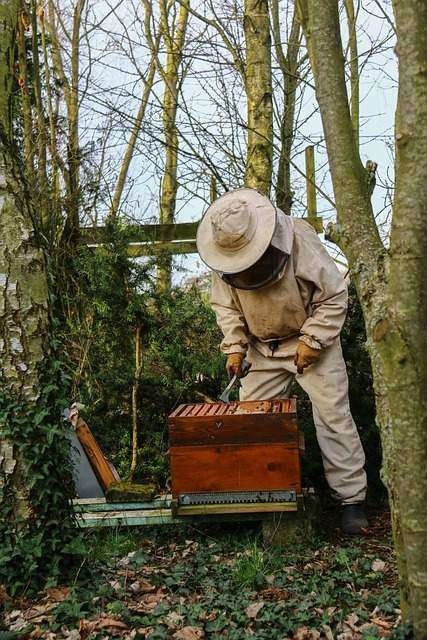
Bees May Get Defensive If:
• They have no queen.
• Nectar dearths occur during these times, and robbers are on the prowl.
• If the colony is infested by varroa mites or other pests.
• When you accidentally capture a bee, it stings you and releases an alarm pheromone, causing you to flee in fear.
• Accidentally knock over a hive’s worth of bees.
Conclusion
To make beekeeping a little more bearable, white bee costumes are commonly used. More heat is absorbed by dark colors, which may prompt bees to engage in defensive behavior.
Also, if you live in a hot climate, I’d recommend the white ventilated beekeeping suit instead. Those suits heat up quickly. Even while dealing with bees in the cooler hours of the day is preferable (and safer), there will surely be times when you have to maintain the hive in the middle of the day when it is unbearably hot.


